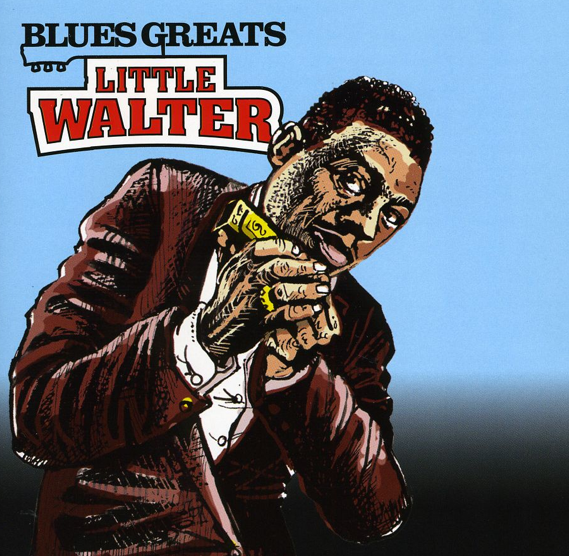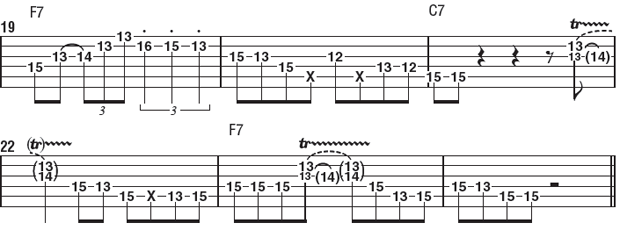Little Walter's Exciting Up-Tempo Jump-Blues Soloing Style

Last month, we saw how harmonica legend Little Walter applied his improvisational genius to slow blues. This month, we’ll see what Walter can teach guitar players about up-tempo soloing.
Walter served his musical apprenticeship in Delta roadhouses during the early Forties and intently studied the style and techniques of down-home blues harmonica masters such as John Lee “Sonny Boy” Williamson, but he also took the instrument into new territory by emulating the jazz-tinged phrasing of jump-blues saxophonists.
Jump was an offshoot of big-band swing that featured fast 12-bar boogie-woogie grooves and full horn sections, and saxophonists were the instrumental stars of the day. With his amplified harp backed by only electric guitars and drums, Walter proved that he could swing with the best of the big bands.
But he also created a unique instrumental voice by fusing wind-driven reeds with electric power and grit. A prime example of Walter’s jump style was captured on his best-selling 1955 single “My Babe” (FIGURE 1 adapts similar phrases to the guitar).
Walter compensates for the harp’s relatively limited melodic range by exploiting rhythm, dynamics and its unique tone, particularly the natural overtones that make every note sound bigger than the equivalent picked string. Guitarists need to crank up the distortion and reverb in order to narrow the gap. More challenging to emulate is Walter’s masterful breath control, which he uses to add subtle swing and dynamic variations to every phrase.
We guitarists can approximate some of the same qualities with ghost notes—fretting certain notes (indicated by Xs in the tablature, as in bar 2)—without fully depressing the string. On individual notes, enhancethe effect with hybrid picking (pick-andfingers technique). Pick the ghost note with a downstroke and pluck the following regular note with a bare finger.
For arpeggios (as in bar 6), sweep pick with consecutive upstrokes and quickly mute the fretted notes immediately after you pick them by relaxing your finger pressure against the strings so that they break contact with the fretboard and cease to ring.
- Walter also frequently thickens his sound with double-stop trills, as in bar 1, going into bar 2. On guitar, fret the double-stop with your index finger at the 13th fret and hammer-on/pull-off repeatedly with your middle finger.
- Attempting to capture the qualities of another instrument can be a slippery task because it challenges guitar-centric assumptions about technique and phrasing. Aspiring to evoke the spirit of Little Walter shows us just how much there is yet to discover right under our own fingers.

Get The Pick Newsletter
All the latest guitar news, interviews, lessons, reviews, deals and more, direct to your inbox!
“There are so many sounds to be discovered when you get away from using a pick”: Jared James Nichols shows you how to add “snap, crackle and pop” to your playing with banjo rolls and string snaps
Don't let chord inversions bamboozle you. It's simply the case of shuffling the notes around
